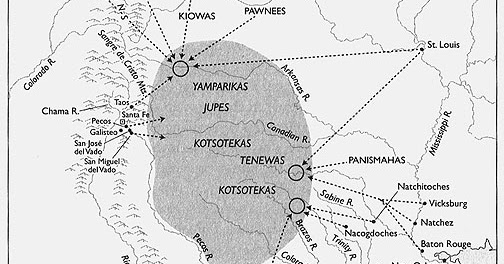
There ensued that night an Indian battle with the Pawnees repeatedlyĪttacking his wagon train and scattering their sheep. On March 10 they set up camp on the Trujillo Creek in present Oldham County. His march took him over the Llano Estacado. At San Miguel, New Mexico, he loaded 600īushels of corn for the animals.

Greggīegan his journey with 28 wagons, two cannons, 47 men, 200 mules, 300 sheepĪnd goats, and an Indian guide. In 1840, Josiah Gregg was determined to establish a better route from Santaįe to the eastern part of the United States. "Great American Desert" across the entire expanse of the Texas Plains.įuture maps would have this designation for about 38 years. His experiences with the LlanoĮstacado and it's barren landscape probably had a lot to do with him marking He is credited as probably the first Anglo-American The first real inroads to settlement on the Llano Estacado byĪnglo-Americans began with the explorer-mapmakers. The Spanish actually gave the Comanche their present name, suing a word that comes from the Ute term Komantcia that refers to "enemy" or more accurately to "anyone who wants to fight me all the time." The Comanche people call themselves Numunuh, meaning "The People." Early French and American explorers knew the Comanches by their Siouan name, Padouca. Fehrenbach, Comanches: the Destruction of a People (1974). Hoebel, Comanches, The Lords of the South Plains (1952) J.

Never a large group despite their wide range, they were greatly reduced by warfare and disease. The sun dance, a common feature in the Plains culture area, was not an important part of Comanche culture they probably introduced the peyote ritual to the Plains tribes. The Comanche, however, considered themselves superior to their associates, and their language served as the trade language for the area. They were associated with the Kiowa, the Cheyenne, and the Arapaho in a loose confederacy. They are said to have killed more whites in proportion to their own numbers than any other Native American group. They were extremely warlike and effectively prevented white settlers from passing safely through their territory for more than a century. The Comanche were excellent horsemen and inveterate raiders, often pushing far S into Mexico. their range included SE Colorado, SW Kansas, W Oklahoma, and N Texas. They separated from the Shoshone and migrated southward in the late 1600s, appearing in New Mexico around 1705. They originated from a Basin-type culture and eventually adopted a Plains culture. At the Comanche Nation Fair, gospel and rock concerts also have a stage during the week.Native North Americans belonging to the Shoshonean group of the Uto-Aztecan branch of the Aztec-Tanoan linguistic stock. Whether it’s powwow songs from the Wild Band of Comanches, flute music from Cornel Pewewardy, hymns in the Comanche language from Marla Nauni or handgame songs from Camp 7, music is at the core. In the summer, a seventeen-year locust was placed in the mouth of an infant or young child so they would grow up to be “fine singers!”

“When I was a child,” Pahdopony said, “I asked if someone wanted the last piece of something.my father said, ‘Are you a warrior?’” In traditional families, no one ate “the last bite” because it “was for a warrior.” Today’s Comanche women’s dance regalia include buckskin and a wide range of material for “Southern Cloth.” This can include velvet, wool broadcloth, cotton and satin. A black velvet dress with cowrie shells was a dress for "the only daughter" because shells were a trade item and not common on the plains.


 0 kommentar(er)
0 kommentar(er)
